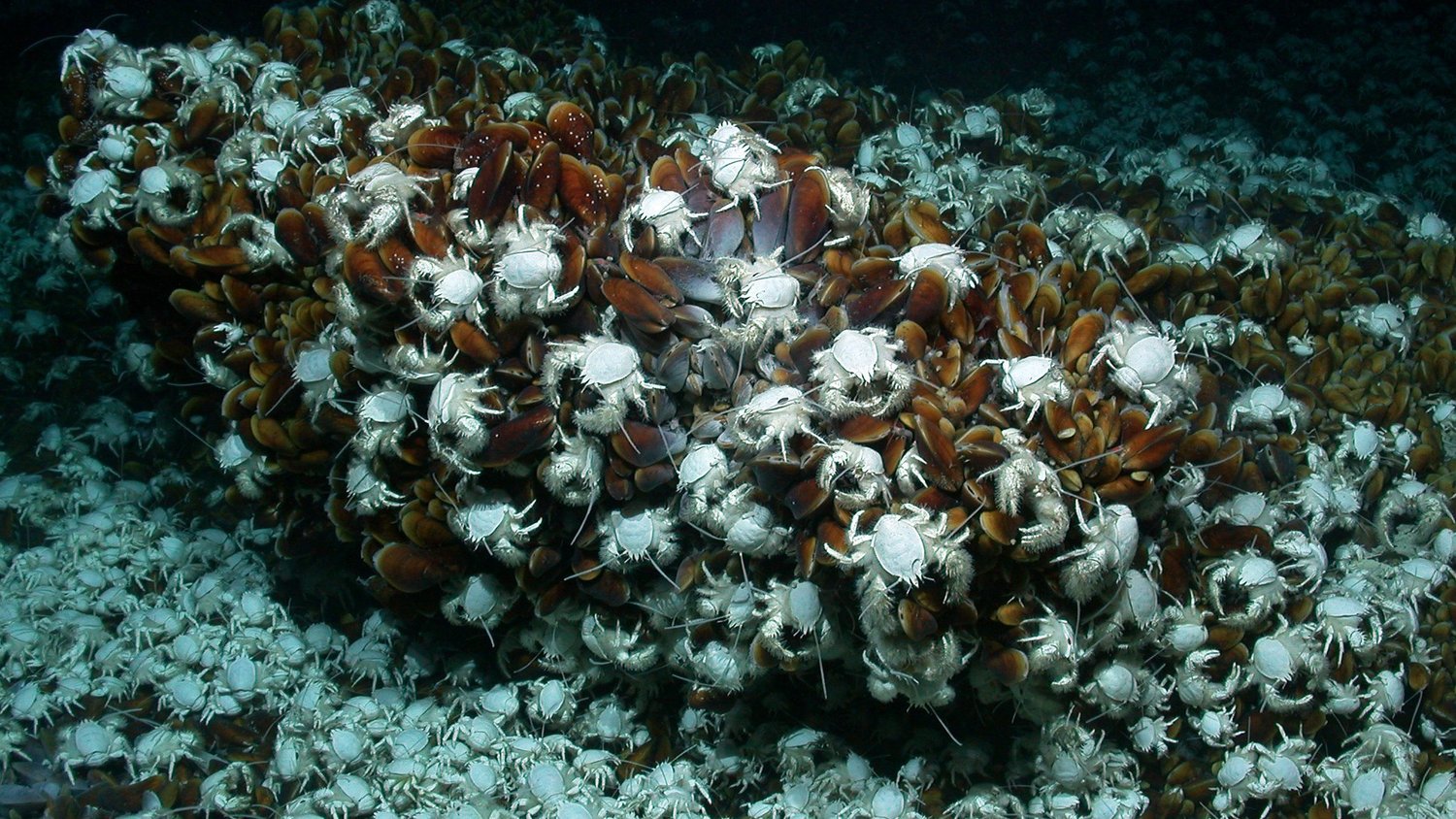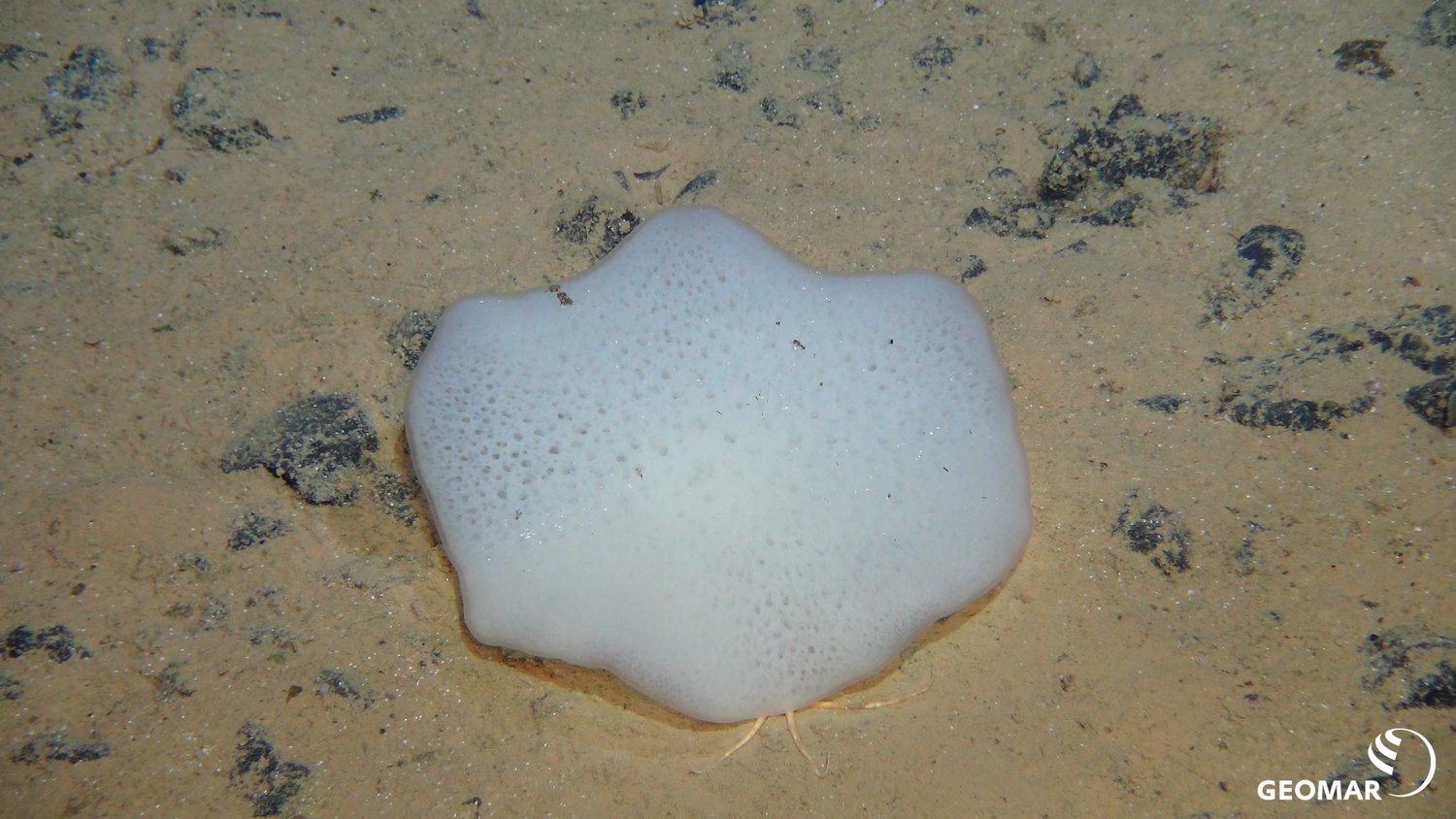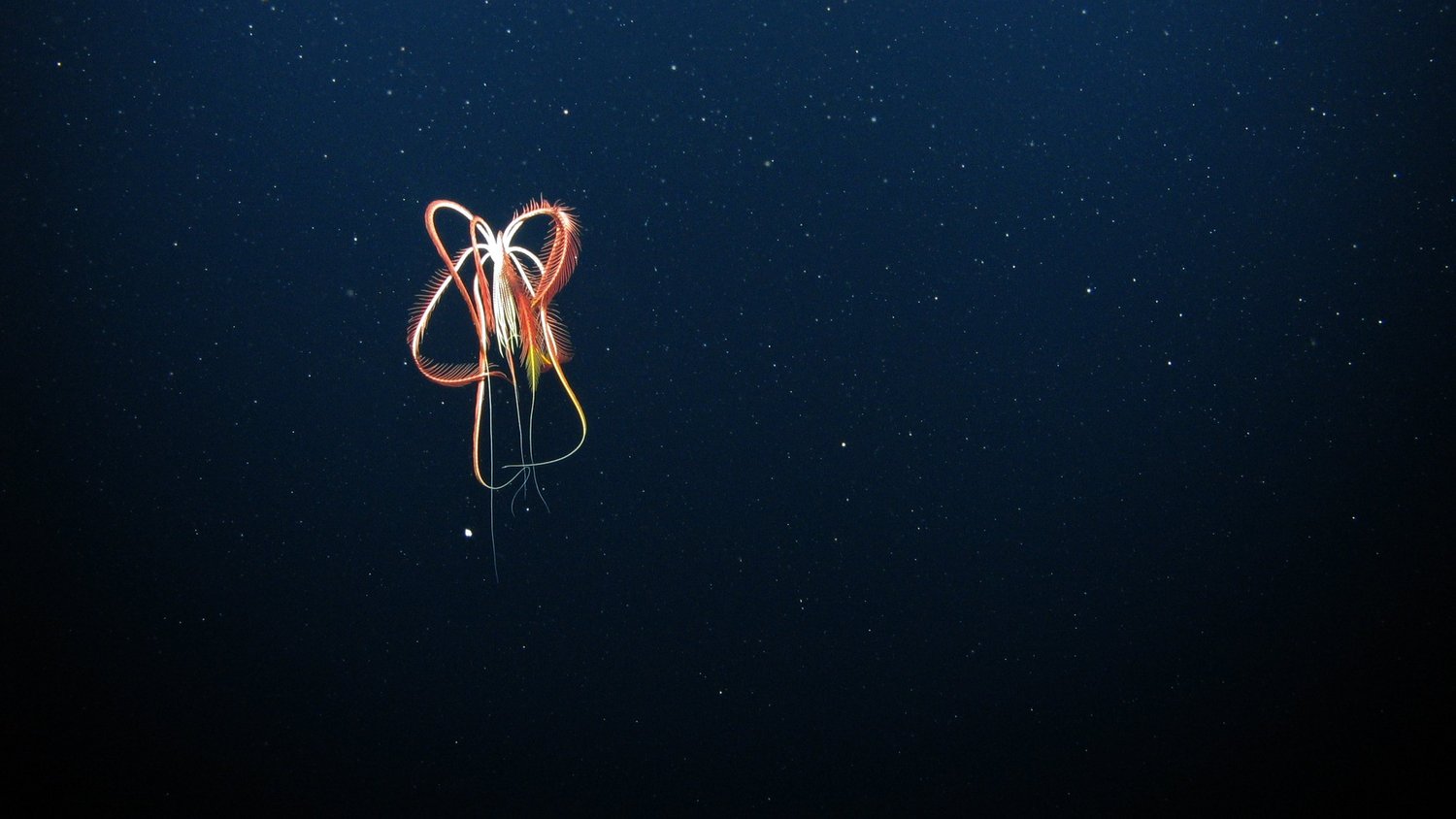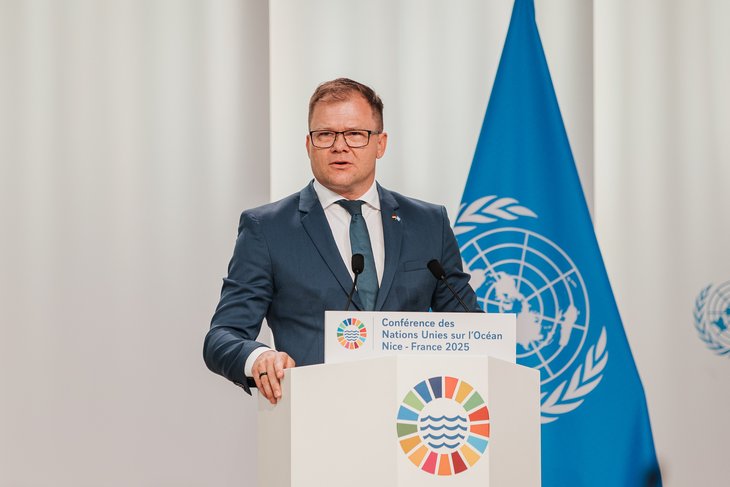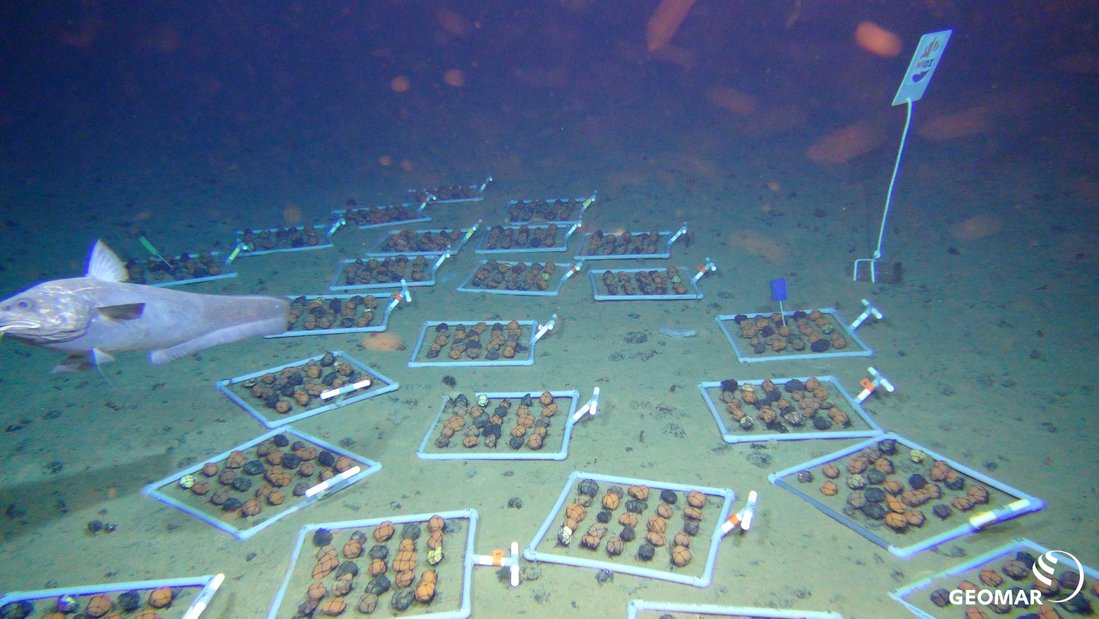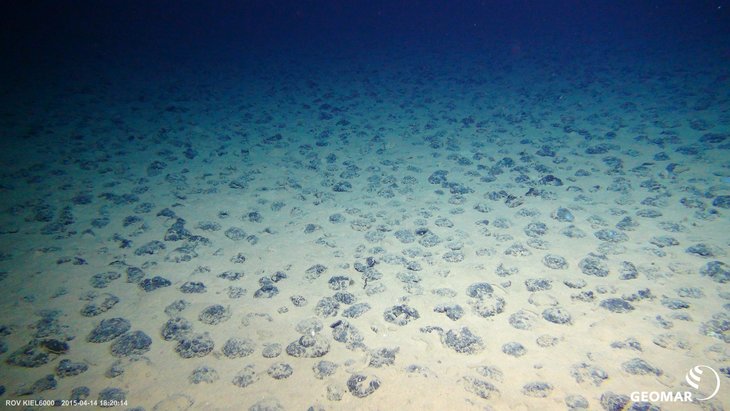
Deep-sea mining refers to the industrial mining of ore deposits at depths of more than 1,000 meters. In view of the continuing high demand for metal-bearing raw materials, the member states of the International Seabed Authority are negotiating how the exploration and mining of ore deposits in deep-sea areas outside national jurisdiction should be permitted. However, the ecological processes and biodiversity in the depths of the oceans have been little researched.
As a result, there is no scientifically sound basis for assessing the possible consequences of deep-sea mining for life on the seabed and in the water column. Germany and other countries are therefore advocating a moratorium - a “precautionary pause” - before any deep-sea mining (see also UN Ocean Conference 2025).
1. Raw material deposits in the deep sea
Three important metal-bearing types of raw materials are found in the deep sea: Manganese nodules, massive sulphides and iron-manganese crusts. In contrast to raw material deposits on land, the deposits on the seabed each contain a variety of different economically interesting metals. Deposits that are particularly rich in cobalt, nickel, copper and zinc are of economic interest.
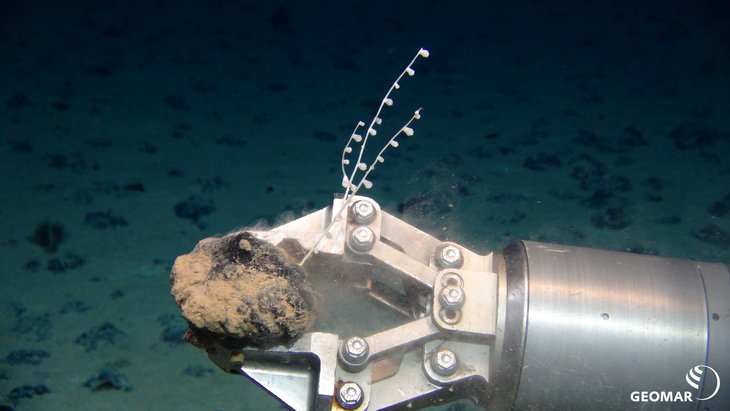
The starting point in each case is a core to which a mixture of iron oxyhydroxides and manganese oxides is deposited in many layers over a period of several million years. Numerous other metals such as nickel, cobalt, copper, molybdenum, rare earths and lithium are also incorporated. The metals originate either from seawater (hydrogenetic formation) or from the pore water of deep-sea sediments (diagenetic formation).
The nodules lie on the seabed, usually one to two thirds embedded in the sediment. In some areas there are only a few manganese nodules per square meter; in others there are up to several hundred. The most economically interesting deposits are found in the Clarion-Clipperton Zone (CCZ). This is located in the equatorial area of the north-east Pacific, between Hawaii and Mexico. Other significant manganese nodule deposits can be found in the Penrhyn Basin (Western Pacific) and in the central Indian Ocean.
For commercial manganese nodule mining, primarily caterpillar-like vehicles are being developed. These suck up the top 4 to 10 centimetres of the deep-sea floor, including the manganese nodules and the organisms living on and in the sediment. The manganese nodules are separated from part of the sediment in the collector vehicle and transferred to a vertical conveyor system (riser). This transports them to the conveyor platform on the surface of the water. Once at the sea surface, the manganese nodules are cleaned of the remaining adhering sediment, dewatered if necessary and loaded onto bulk carriers for transportation ashore. The sediment wastewater is discharged back into the deep ocean.
1.2 Cobalt-rich iron-manganese crusts
Cobalt-rich iron-manganese crusts are hard coatings of iron and manganese oxides that form on the slopes of undersea volcanoes and absorb their metals mainly from the surrounding seawater. Various metals accumulate in the crusts. These include cobalt, nickel, titanium, molybdenum, zirconium, tellurium, bismuth, niobium, tungsten, rare earths and platinum.
Around two thirds of the known deposits of cobalt-rich iron-manganese crusts for deep-sea mining are located in the Pacific Ocean, 23 percent in the Atlantic and around eleven percent in the Indian Ocean. The known crusts are generally three to six centimetres thick, in exceptional cases up to 26 centimetres, so that experts currently assume 60 to 120 kilograms of ore per square meter of slope area.
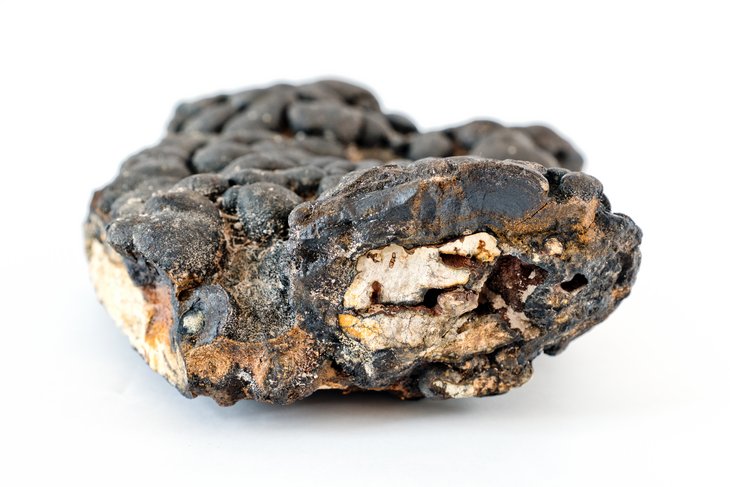
A Chinese company has developed a prototype for mining iron-manganese crusts that can not only move on the seabed, but can also cut and crush iron-manganese crusts. Detaching the crusts from the seabed is a technical challenge, as they often replicate the surface shape of the bedrock. If this is uneven, mining vehicles can quickly get stuck. Steep slopes are an equally big challenge. To cut and crush the crusts, experts are currently considering methods using a high-pressure water jet or rotating roller chisels, such as those used in coal mining.
1.3. Solid sulfides
Marine massive sulphides or polymetallic sulphides are metal-sulphur compounds (metal sulphides) that form at hot springs on the sea floor at water depths of 1600 to 4000 meters. These hydrothermal deposits are linked to volcanic structures and therefore occur primarily at tectonic weak points in the earth's crust - for example at mid-ocean ridges, in so-called backarc spreading zones and at island arcs.
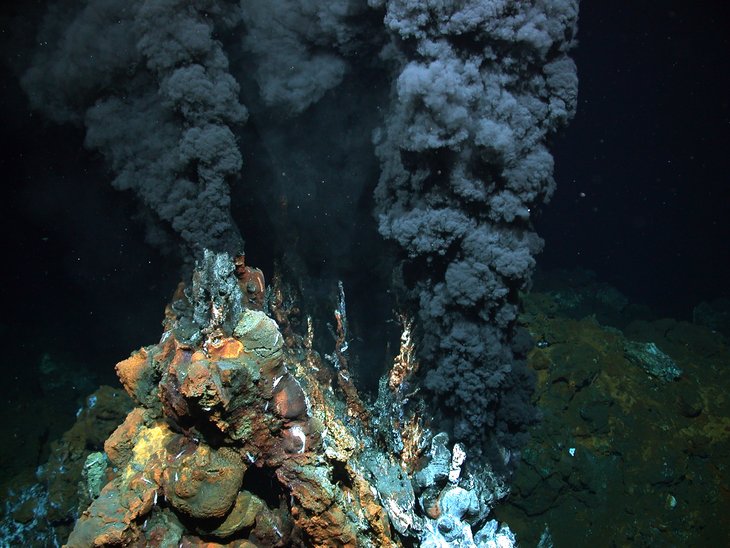
Massive sulphides are formed by the circulation of seawater through the upper oceanic crust. The seawater is heated in the process and turns into a hot, acidic and highly concentrated solution that can dissolve metals from the volcanic rocks. When this solution emerges from the seabed at a hot spring, it is cooled down. The dissolved metals are precipitated in the form of metal sulphides and form metal sulphide mounds, chimneys or metal-rich sediments. These contain copper, zinc, lead, silver, gold and a variety of minor and trace metals. These include cobalt, antimony, indium, selenium, tellurium, gallium, germanium, bismuth and molybdenum.
Experts currently know of more than 630 active hydrothermal vents where metal sulfides are known to form. However, the massive sulfide deposits that are potentially profitable for deep-sea mining are located in inactive areas of former hydrothermal fields and thus away from the active hot vents, likely buried beneath several meters of sediment. So far, there are no technologies available that can reliably detect and extract these hidden ore deposits.
2. The deep sea – a habitat of extremes
The deep sea is the largest habitat on Earth. Depending on the definition, it ranges from a water depth of 200 or 1,000 meters to the sea floor at a maximum depth of 11,000 meters (Mariana Trench). To date, only a fraction of this habitat has been mapped and studied. Nevertheless, there is much evidence to suggest that the biodiversity of the deep ocean exceeds all known dimensions – from multicellular animals to microorganisms.
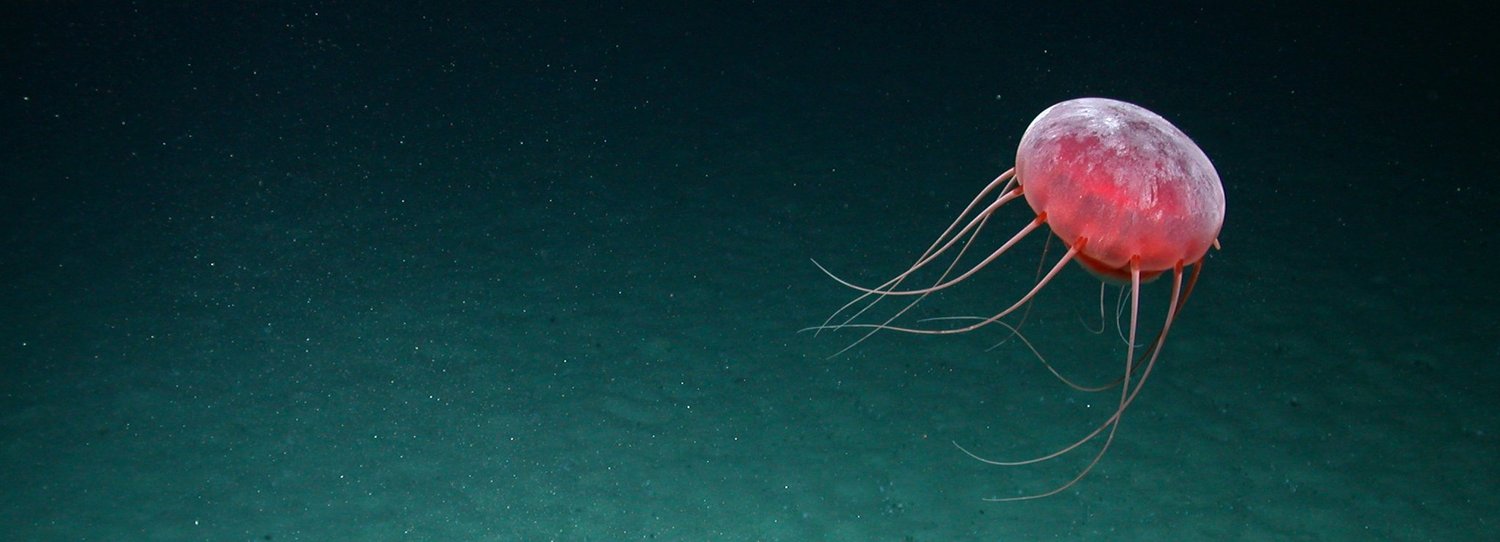
Deep-sea communities have adapted to the extreme environmental conditions at depth over millions of years. It is dark and cold. Organisms must withstand high water pressure, and food is scarce in many places. Deep-sea organisms therefore move in an energy-efficient manner and grow slowly compared to species near the surface. Key organisms reach a ripe old age and have long reproductive cycles. In addition, environmental conditions in the deep sea often change over short distances, which is why communities on the seabed can differ significantly from one another. All these factors mean that deep-sea communities are very sensitive to disturbances or interventions in their habitat and usually recover only very slowly.
Science currently faces the challenge of making detailed predictions about the possible effects of deep-sea mining on life in the deep sea. However, to do so, researchers need functioning ecosystem models for the deep-sea communities affected by mining. These models do not yet exist because the biodiversity, structure, and functioning of deep-sea communities are still poorly understood. One thing is clear: the deep sea is home to an immense diversity of species with ecological functions that contribute to the ecosystem services of the oceans.
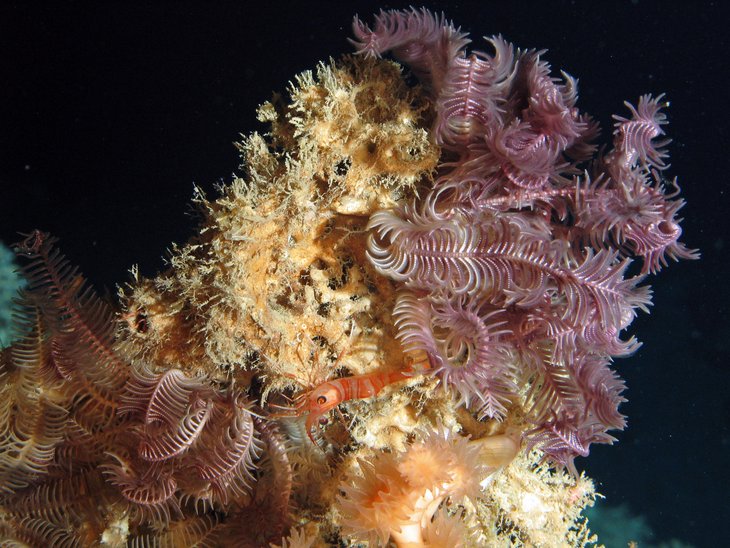
Undersea mountains are hotspots of marine life. They often rise thousands of meters above the seabed, providing habitats at various depths. Life on the mountain slopes is correspondingly diverse: an as yet undetermined number of sedentary organisms settle on the rock-like slopes, including sponges, mussels, and cold-water corals.
They all benefit from nutrient-rich deep-water currents that rise up the mountain slopes, mix with higher water masses, stimulate algae growth, and thus provide the inhabitants living on the mountain slopes with sufficient organic material—i.e., food—at all times. For these reasons, the biodiversity of sessile organisms on submarine mountains is also significantly higher than in the surrounding sediment-covered deep-sea plains.
Hydrothermal vents – chemical energy as the engine of life
Hot and cold deep-sea vents are among the most extreme habitats on Earth. Nevertheless, they are home to uniquely complex and, in many places, endemic communities. This means that a high proportion of the marine organisms living there are found only at certain vents and nowhere else. This explains why new deep-sea species are usually discovered at every newly mapped vent.
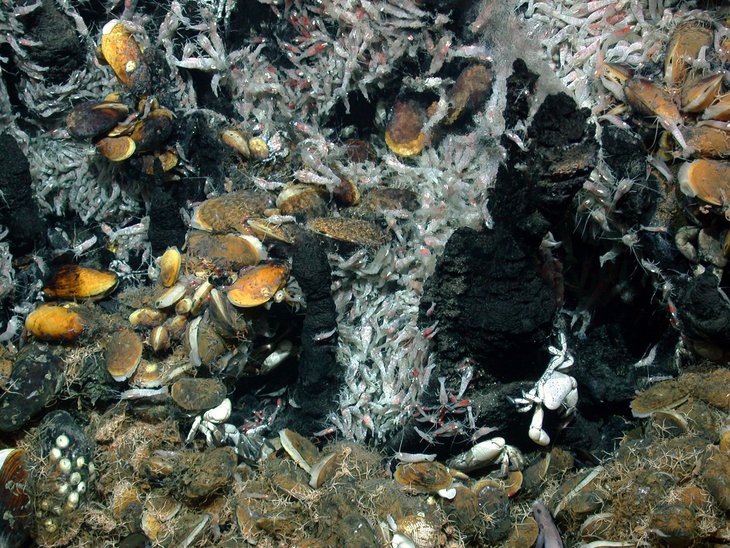
The biodiversity within each individual community is generally low. However, since the living conditions at each spring are different and the species that settle there are usually highly adapted, the overall biodiversity is higher. Experts refer to the heterogeneous and patchy distribution of communities, which means that each individual community is very susceptible to disturbance. At the same time, experts know that springs can dry up within a few years. The communities at the springs are therefore constantly exposed to major changes and the overall structure is very dynamic.
The inhabitants of the springs owe their food and energy to special deep-sea bacteria. Instead of sunlight, which is absent in the deep sea, these bacteria use chemical energy to produce sugar and biomass. This process is called chemosynthesis. The bacteria use the energy released when sulfur- or methane-containing spring water emerges from the seabed and its components react with the seawater. If sufficient chemical energy is available, the bacteria grow and form dense mats on the seabed. However, the microorganisms often live on or in larger deep-sea inhabitants and supply them directly with food. These primarily include various species of tube worms, mussels, snails, clams, crabs, and deep-sea shrimp.
Deep sea plains – home of the hunger artists
The vast, sediment-covered plains of the deep sea cover more of the Earth's surface than all other habitats combined.(3) Its inhabitants face very special challenges every day, because most of the available food consists of the remains of plankton, i.e., algae and animals that live in the upper layers of the ocean. However, less than one percent of these falling remains reach the deep sea.
Because both the food supply and the sedimentological and geochemical conditions at the sea floor can change over distances of less than 1,000 meters, the deep-sea plains are home to a wide variety of animals and microorganisms. Among the best-known inhabitants of the deep-sea plains are corals, sponges, sea anemones, brittle stars, sea cucumbers, sea urchins, copepods, and, of course, the now often-filmed deep-sea octopuses, which are known to remain on manganese nodules for up to three years, caring for their young before their offspring hatch.
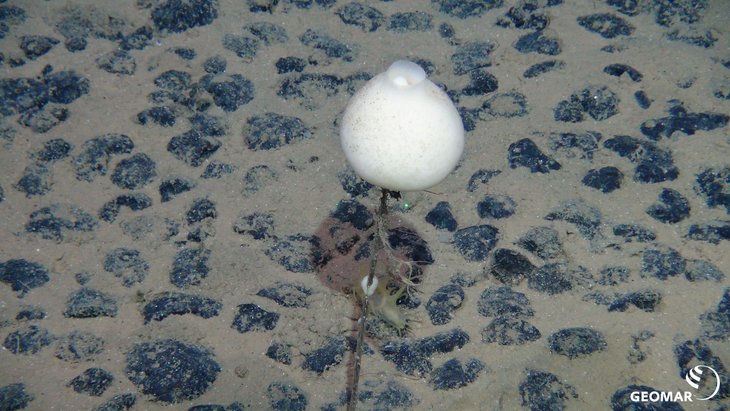
The nodules provide firm footing on the soft deep-sea floor for sessile animals—such as stalked sponges, to which octopuses attach their eggs.
In recent years, scientists have been able to identify and describe numerous new species from the Clarion-Clipperton Zone. However, the population density of most species on the seabed is low. This is one reason why statements about biodiversity in the deep-sea plains and its significance for life in the rest of the water column are subject to uncertainty.(4)
3. How deep-sea mining is changing ecosystems
If humanity decides to embark on deep-sea mining, a variety of mining and extraction techniques will have to be used to tap the various ore deposits in the deep sea. Appropriate methods are currently being developed and tested.
Regardless of the technical details, however, the basic principle of deep-sea mining is always the same: If present, the first step is to remove the sediment layer above the ore deposits. The ores are then loosened from the seabed by a collection, cutting, or drilling vehicle, collected, crushed if necessary, and then pumped through a transport pipe to a production platform or a ship on the sea surface. There, the ores are cleaned of sediments and any possible adhesions, presumably pre-sorted, and transported ashore for further processing. The sediment-containing process water is returned to the sea.
Relevant disruptive factors in manganese nodule mining
Such a mining process would entail a number of disruptive factors for marine life, especially in the deep sea. In the case of manganese nodule mining, these include in particular:
- the removal of the upper living layer of the seabed, which would destroy habitats and disrupt connections between species;
- the discharge of process water into the water column;
- disturbances to the chemical balance at the sediment-water interface;
- increased noise pollution as a result of raw material extraction, ore transport to the sea surface, and associated shipping traffic; and
- increased light pollution in the deep sea, if artificial light were to be used.
The individual disruptive factors are described in more detail below.

The sediments on the sea floor play a key role in life and nutrient cycles in the deep sea. The upper ten centimetres of the sediment layer are home not only to threadworms measuring a few tenths of a millimetre, which make up the majority of the biodiversity, but also to countless other, mostly still unknown bottom-dwelling organisms measuring far less than a millimetre. Bacterial communities decompose the algae, faeces and other particles that trickle into the deep sea and ensure that the nutrients they contain are recycled and released again.
When manganese nodules are collected or massive sulfides are mined from beneath a layer of sediment, the first step is to suck up the entire living soil layer. This stirs up the sediments, forming so-called sediment or turbidity clouds, which are carried away by currents near the seabed. During a test run of a manganese nodule conveyor crawler in the Clarion-Clipperton Zone, researchers were able to closely examine the formation and behavior of the sediment clouds. According to their findings, the sediment particles were stirred up to heights of 30 meters. However, the majority of the sediment clouds remained below the 10-meter mark and thus close to the seabed.
Approximately 95 to 98 percent of the stirred-up sediment subsequently settled within a radius of 2,000 meters around the mining site, covering the organisms living on and in it. The remaining 2 to 5 percent of the stirred-up sediment was transported over distances of more than 5000 meters. Here, the particle load was up to a hundred times higher than is usual in clear deep water. A 2 to 3 centimeter thick layer of sediment was deposited within a radius of 100 meters. At a distance of 500 meters from the mining site, this layer was still up to about one centimeter thick. This means that as much sediment was deposited as would normally be deposited in 10,000 years.
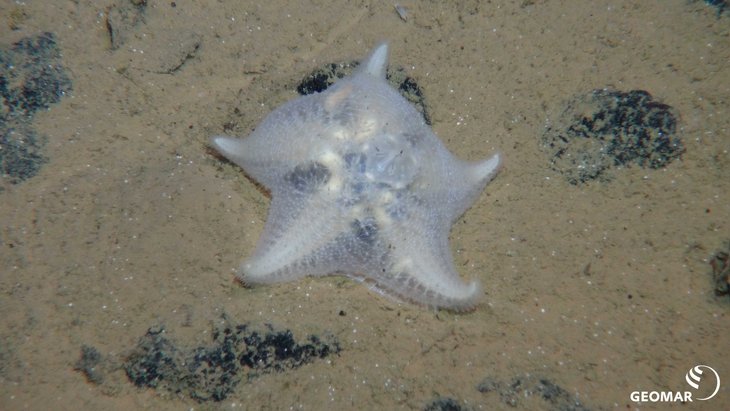
Experiments have shown that such deposits pose a mortal danger to nematodes. Their mortality rate rose sharply when sudden deposits of more than half a centimeter occurred. Sedentary animals such as sponges and corals, which settle in close proximity to the mining area on the seabed and filter the otherwise very clear bottom water for their nutrition, are covered by the mass of sinking sediment particles and therefore have little chance of survival. It is also uncertain whether the organisms in the extracted sediment layer will survive.
There is one additional factor to consider: in the vast sediment-covered deep-sea plains, manganese nodules often represent the only solid substrate on the seabed where sessile organisms such as deep-sea sponges and corals like to settle and frequently do so – and have done so for thousands of years. If the nodules are mined, these deep-sea organisms will lose these important habitats. It takes millions of years for new nodules to form.
Based on current knowledge about the consequences of seabed erosion and the resulting consequences, experts have drawn an important conclusion: if humanity decides to engage in deep-sea mining, individual mining activities must be combined in a spatially sensible manner. This is the only way to keep the seabed area indirectly affected by mining as small as possible.
Process water: the shallower the discharge, the more harmful it is
A second source of danger would be the reintroduction of process water. After cleaning the ores from the sea surface, the water would contain not only sediments, but also dissolved metals. The process water would be so contaminated that it would form its own sediment cloud in the water column and disperse its contents over a wide area, harming all living organisms in the affected water layers.
Currently, there are no regulations regarding the depth at which wastewater should be disposed of. Experts recommend discharging it at the seabed above the extraction sites at the greatest possible depth, in order to minimise additional impact — especially on life in the water column. However, the greater the depth of discharge, the higher the cost of disposing of process water.
Disturbances to the chemical balance at the sediment–bottom water interface
The upper sediment layers on the deep-sea floor have formed over tens of thousands of years. During this time, disturbances have been extremely rare, allowing a stable sequence of metabolic processes to become established within the sediment – particularly in regions targeted for potential manganese nodule mining.
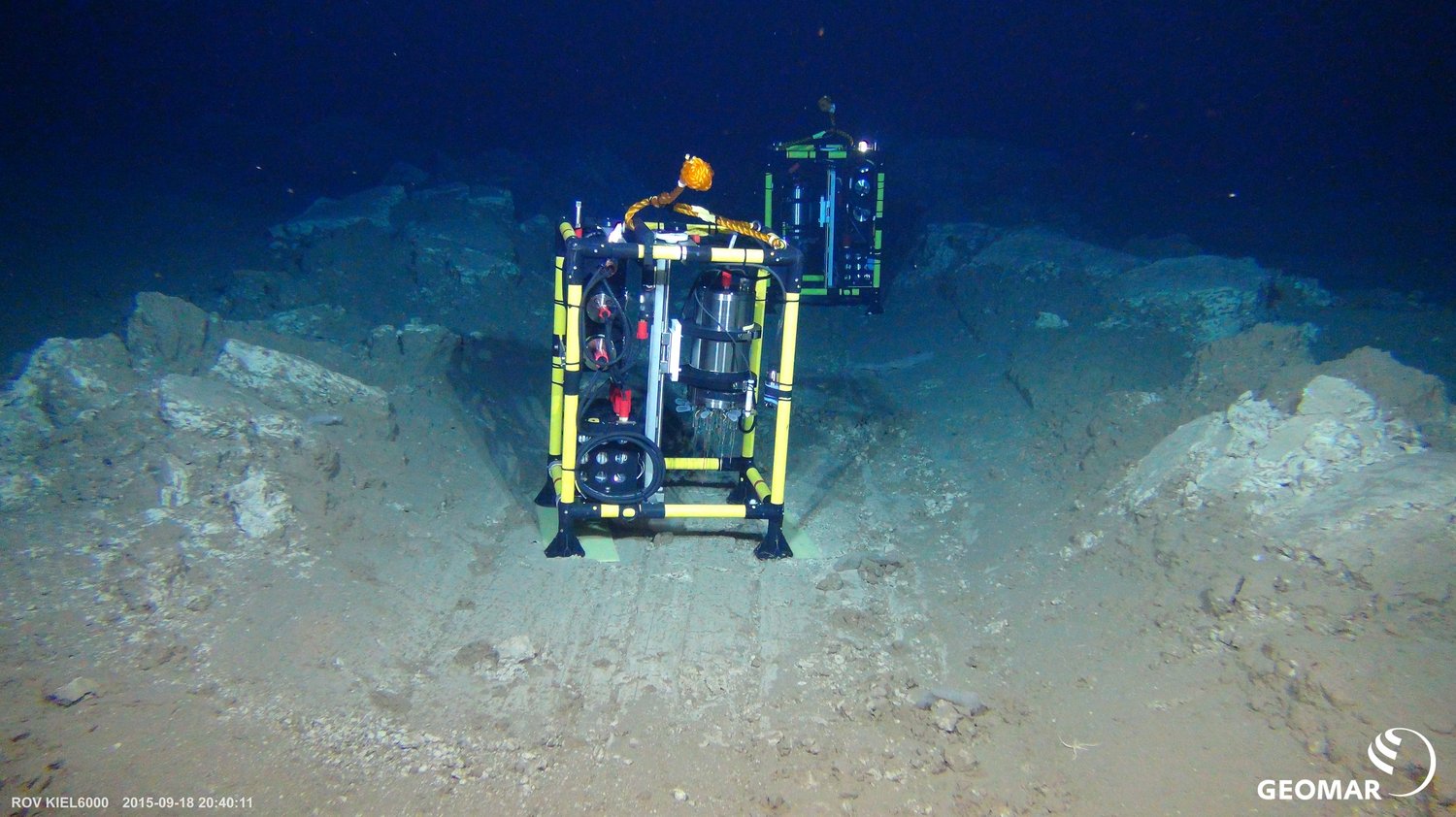
Experts refer to this as redox zonation: organisms in the upper sediment layers are still supplied with sufficient oxygen from the bottom water. This allows them to break down animal and plant material contained in the sediment to sustain life. Their counterparts in the middle layers, however, must survive without oxygen. Instead, they use nitrate stored in the sediment to generate energy. Microorganisms in the lowest layers, in turn, rely on manganese oxide as a vital resource. In other words, the varying chemical conditions within the sediment create a distinct separation of species and habitats.
If these sediment layers are disturbed by resource extraction, there is a high risk that the upper layers will be pushed downwards while deeper sediments are brought to the surface and come into contact with oxygen-rich bottom water. As a result, the chemical and biological stratification of life within the sediment is disrupted. The communities of organisms in the seabed are thrown off balance – starting with the microorganisms and eventually affecting all higher life forms that depend on them. In some cases, even toxic metals previously trapped in the deeper layers may be released into the environment for short periods.
Researchers have already demonstrated the consequences of such a chemical mess in the deep sea. Measurements taken from sediment layers that had been disturbed for research purposes showed that the chemical balance in the pore water had not been restored even weeks after the disturbance. It takes the sediment itself even longer to return to its original state. When the researchers returned to a deep-sea area where they had previously scoured the seabed, a few years ago, the disturbed sediment was clearly still different from the surrounding undisturbed areas in terms of colour, stratification, and the composition of organisms.
Noise pollution: A problem of as yet unknown scale
Mining deposits in the deep sea generates noise from multiple sources – such as the engines of the vehicles and machinery used, the crushing of nodules or crusts, and the transport of raw materials to the surface. However, when experts measured noise levels during a mining test in the Clarion-Clipperton Zone, they found that the production noise at 4,000 metres depth was drowned out by the engine noise of ships at the surface.
It should be noted, however, that the test was conducted without a lifting system, meaning no transport of manganese nodules to the surface took place, likely producing less noise than a commercial nodule mining operation would. Nevertheless, this observation suggests that noise pollution in the marine environment caused by deep-sea mining must be studied far more broadly. Investigations should not be limited to the mining activities on site but must also consider the soundscape created by the additional ship traffic.
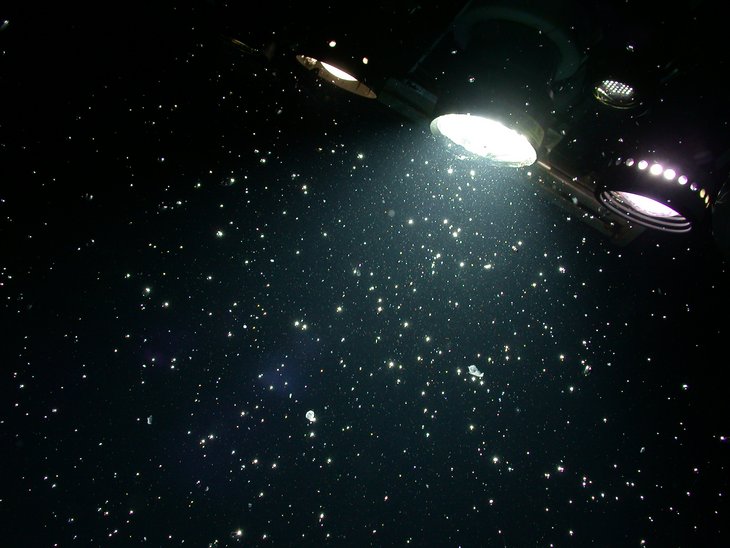
Many publications on the possible effects of deep-sea mining have also referred to the potential for increased light pollution, based on the assumption that mining companies would use vehicles and equipment fitted with spotlights in the deep sea.
However, in the case of industrial mining, it is much more likely that hydroacoustic methods would be used to explore the seabed's surface shape and nodule density during the exploration phase, and to control the collector vehicle during subsequent mining, rather than artificial light. While these methods would prevent light pollution of the deep sea, they would introduce other issues, such as additional noise pollution.
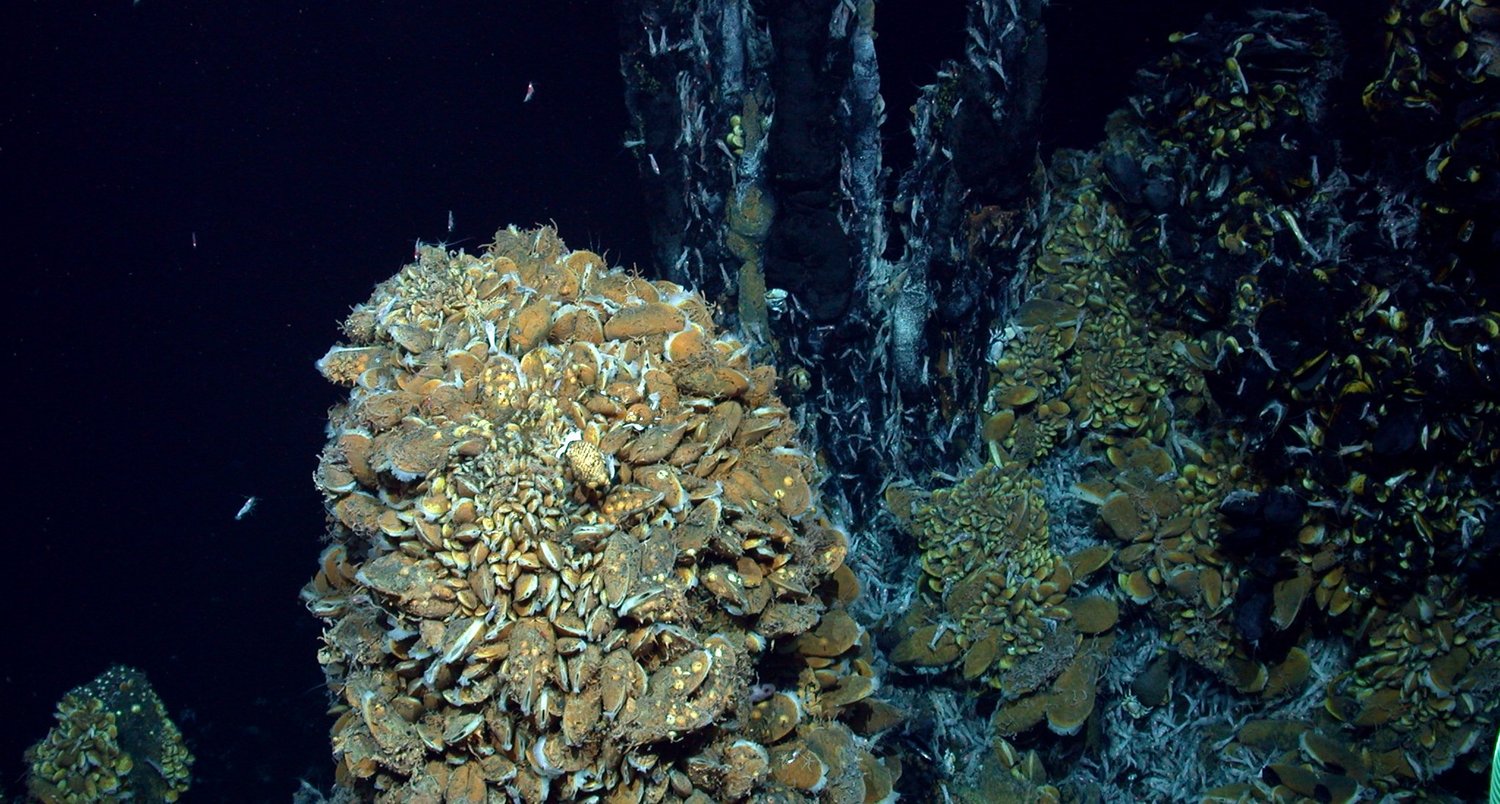
Ecological impact of massive sulphide mining
The potential consequences of mining marine massive sulphides for deep-sea life differ in two key respects from the possible impacts of manganese nodule extraction. Firstly, massive sulphide mining would affect a much smaller area of the seabed than the collection of manganese nodules. While nodule fields stretch across vast deep-sea plains, massive sulphide deposits typically cover a relatively small footprint on the ocean floor – often just a few football fields in size. However, they can extend hundreds of metres below the surface. As a result, the disruption to seabed and sediment-dwelling communities would be considerably less than in large-scale manganese nodule mining operations.
The second difference relates to the age and adaptability of local deep-sea ecosystems. Massive sulphides form in tectonically active zones, but they can only be mined once the hydrothermal vents have become inactive. Nonetheless, their geological origins mean that the associated ecosystems are, in comparison to those found in manganese nodule fields, relatively young. Habitat disturbance is also not uncommon in tectonically active regions. Researchers therefore suspect that the communities living near massive sulphide deposits may recover more quickly from deep-sea mining than the ancient, slow-growing ecosystems found in nodule-rich areas.
4. Possible long-term consequences in the deep
Local damage caused by deep-sea ore extraction is now well documented, as are its long-term consequences. Insights come from several relatively small-scale disturbance experiments, which indicate that manganese nodule mining in particular destroys life both on and within the seabed, and disrupts nutrient cycles and fundamental biogeochemical processes for decades or even centuries. These include the breakdown of organic material, respiration, and the secondary production of microorganisms in the biologically active sediment layer. To fully restore these processes, a new sediment layer would need to form – a process that takes at least 10,000 years on the deep-sea plains.
Experts differ in how they assess these long-term impacts. Some regard them as highly significant. Others argue that the damage must be viewed in proportion to the area affected, and that it is crucial to consider which deep-sea communities are involved. If the species and ecosystems are found only at the mining site, the assessment would be different from that of communities that also exist elsewhere in the deep sea.
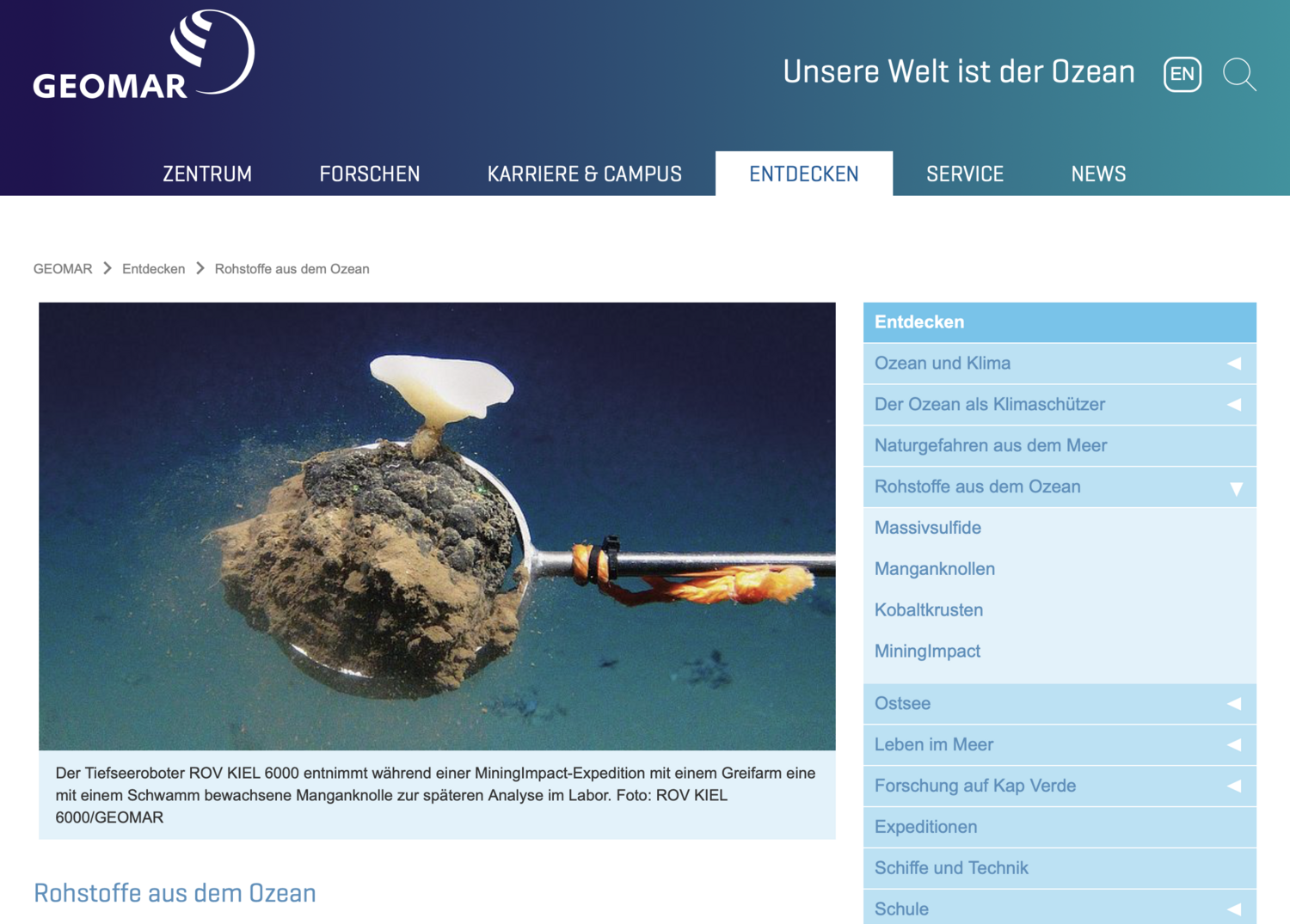
Research focus: Raw materials from the ocean
GEOMAR conducts research into the impacts of exploiting seabed mineral resources and explores options for environmental monitoring. Its webpage “Discover” offers up-to-date reports from ongoing research, background information, and further links on these topics.
Deep-sea researchers are also observing long-lasting changes in biodiversity and population density on the ocean floor. For instance, in undisturbed areas, filter-feeding species make up around three-quarters of the recorded individuals. In areas that have been disturbed for research purposes, by contrast, they account for less than half. Researchers also count significantly fewer animals in these disturbed zones compared to the surrounding untouched seabed.
A review study from the Clarion-Clipperton Zone found that, following disturbance, some sediment-dwelling species recolonise relatively quickly – within months or years – and in some cases even exceed their previous population levels. Others, however, may take several decades to return. The researchers concluded that the recolonisation of disturbed areas can take many generations. The composition of the seabed communities remains altered even decades after the disturbance. However, the findings from the Clarion-Clipperton Zone cannot be directly applied to other regions – neither to different deep-sea areas nor to other types of marine mineral deposits such as sulphides or crusts.
Possible consequences for the ecosystem services of the oceans
Without comprehensive knowledge of ecosystem processes and biodiversity, well-founded decisions on the sustainable use and protection of the deep sea are not possible. This is emphasised by a group of leading international marine scientists in a position paper by the European Marine Board .
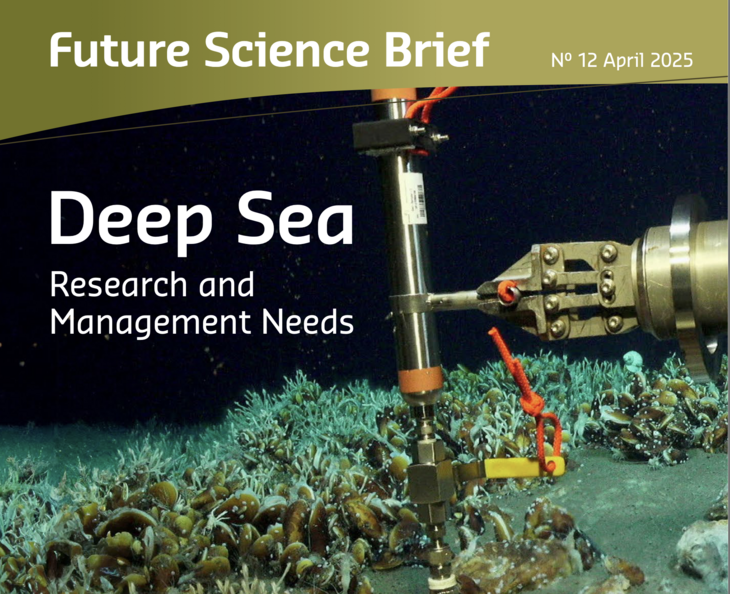
The ocean is an interconnected system extending from the coast to the deepest depths. The deep sea cannot be considered in isolation from the upper, light-flooded zone. Consequently, the utilisation and protection of the deep sea are directly linked to the health of the ocean as a whole.
It is estimated that 90 per cent of all deep-sea organisms have not yet been described, and their roles in the ecosystem remain unknown. There are also significant gaps in our understanding of deep-sea current modelling, which is crucial for the transport of nutrients and pollutants. Furthermore, it is unclear how human interventions such as deep-sea mining influence biogeochemical cycles in the deep sea.
It is scientifically proven that the ocean – most of which is made up of the deep sea – stores vast amounts of carbon dioxide and heat, thereby slowing human-induced climate change. The ocean also plays a key role in the global carbon cycle and in oxygen production. Disruptions to these functions could have serious global consequences, which is why safeguarding these ecosystem services is of vital importance.
5. Deep-sea mining – if so, how? The political dimension
Based on current knowledge, experts expect that mining the various ore deposits in the deep sea will have both direct and indirect impacts on a wide range of marine ecosystem components – affecting not only the seabed but also the water column. Without a thorough understanding of ecosystem processes and biodiversity, informed decisions on the sustainable use and protection of the deep sea are not possible.
For this reason, it is essential to develop methods and strategies that enable comprehensive environmental impact assessments for potential deep-sea mining projects. In addition, the draft regulations of the International Seabed Authority (Mining Code) stipulate that companies must meet certain environmental protection requirements. What those requirements will be must be determined on the basis of international scientific research.
Germany's position on deep-sea mining
Germany holds two exploration licences granted by the ISA. One covers an area in the Clarion-Clipperton Zone in the North Pacific for manganese nodules, while the other pertains to massive sulphides in a region of the Indian Ocean along the Southwest Indian Ridge. These licences permit research but not exploitation, with coordination managed by the Federal Institute for Geosciences and Natural Resources (BGR). The aim is to strengthen strategic resource security and to gain insights into the potential ecological consequences of any future mining (Information from the BGR on marine resource research).
At the third UN Ocean Conference in 2025 in Nice, the German government advocated for the effective implementation of the precautionary approach and called for a “precautionary pause” on deep-sea mining. Until further notice, no deep-sea mining should take place, as knowledge about deep-sea ecosystems and the possible impacts of mining remains far from sufficient. In total, 37 states, including Germany, supported a corresponding moratorium in Nice (position of the German government).
“We continue to advocate for a precautionary pause on deep-sea mining at the International Seabed Authority (ISA). Only the ISA has the mandate to authorise activities in the deep sea. However, the gaps in our knowledge about the deep sea are still far too large to proceed.”
(Federal Environment Minister Carsten Schneider in his speech at the World Ocean Conference in Nice)
(1) Diese Angaben sind Durchschnittswerte nach Hein und Koschinsky (2014).
(2) alles aus: World Ocean Assessment II, Chapter 7L, https://www.un.org/regularprocess/woa2
(3) World Ocean Assessment II, Chapter 7M, https://www.un.org/regularprocess/woa2
(4) World Ocean Assessment II, Chapter 7M, https://www.un.org/regularprocess/woa2
Further links:
- GEOMAR: Themenschwerpunkt “Rohstoffe aus dem Ozean”. https://www.geomar.de/entdecken/rohstoffe-aus-dem-ozean
- Bundesamt für Naturschutz (BfN): Tiefseebergbau. https://www.bfn.de/tiefseebergbau
- Bundesanstalt für Geowissenschaften und Rohstoffe (BGR): Marine Rohstoffforschung. https://www.bgr.bund.de/DE/Themen/MarineRohstoffforschung/marinerohstoffforschung_node.html
- Forschungsinstitut für Nachhaltigkeit (RIFS): Eine “vorsorgliche Pause” für den Tiefseebergbau.
https://www.rifs-potsdam.de/de/news/eine-vorsorgliche-pause-ist-der-naechste-schritt-fuer-den-tiefseebergbau - World Ocean Review 3 (2014): Rohstoffe aus dem Meer - Chancen und Risiken. https://worldoceanreview.com/de/wor-3/



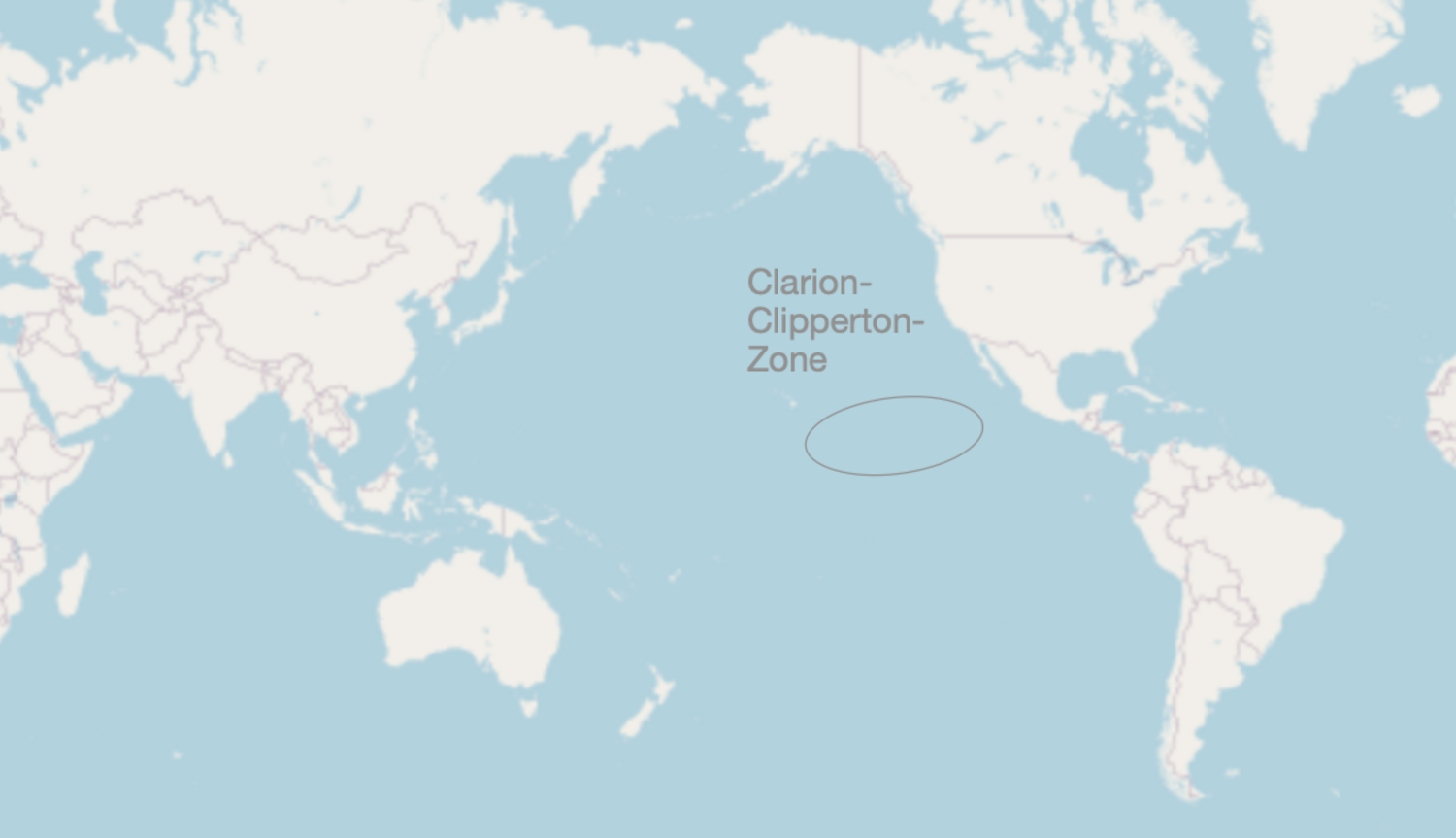
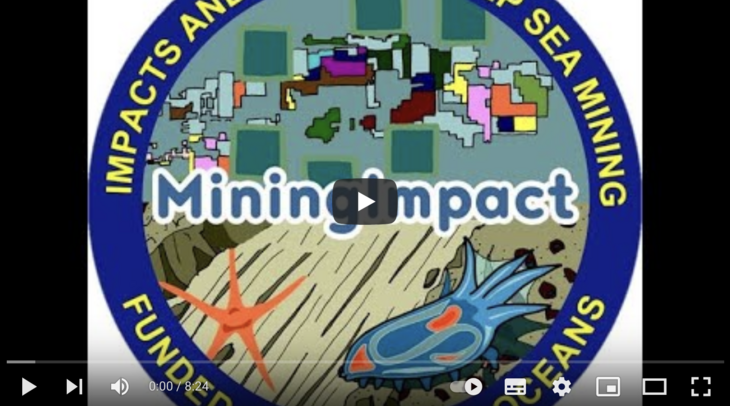
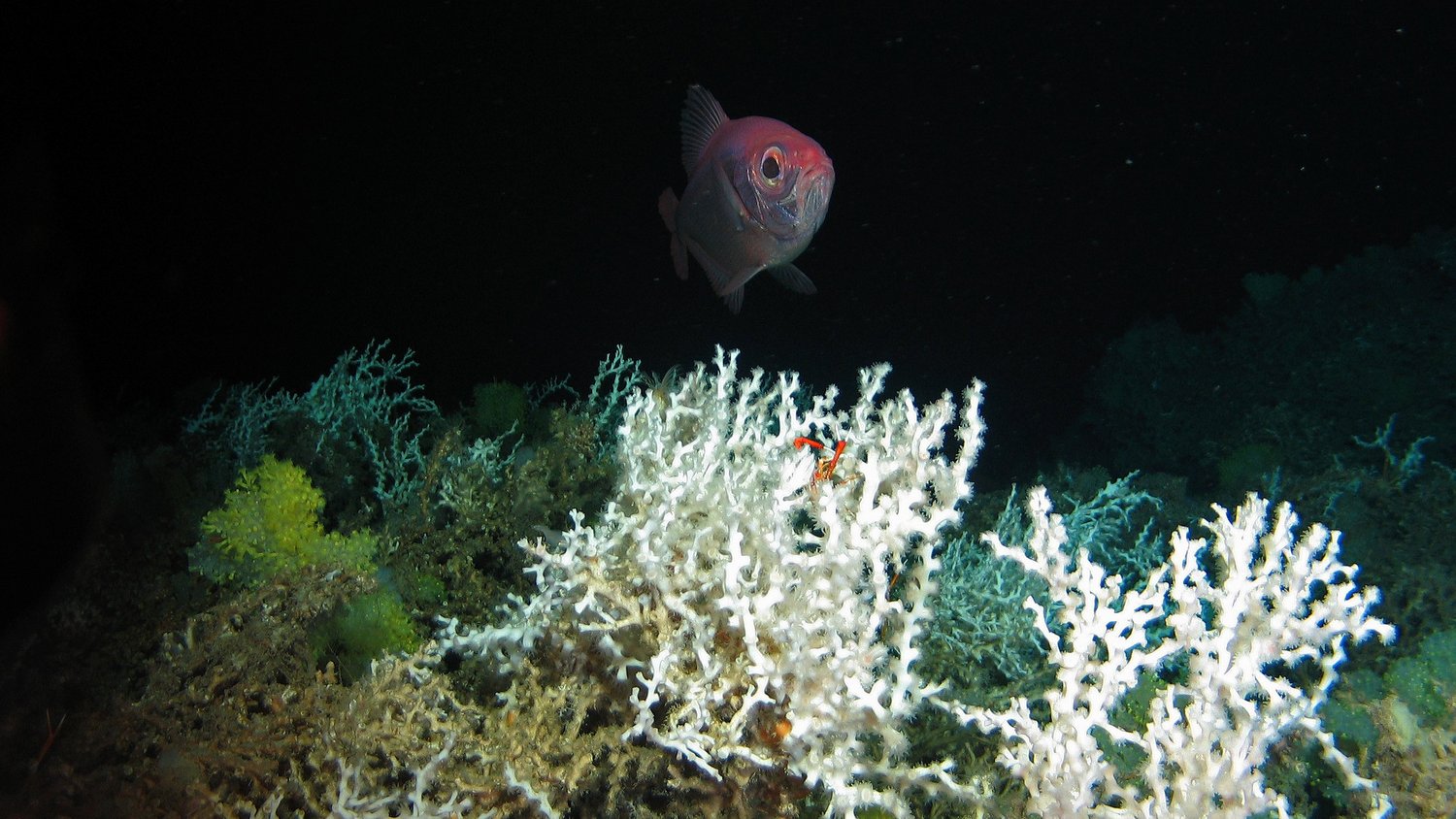
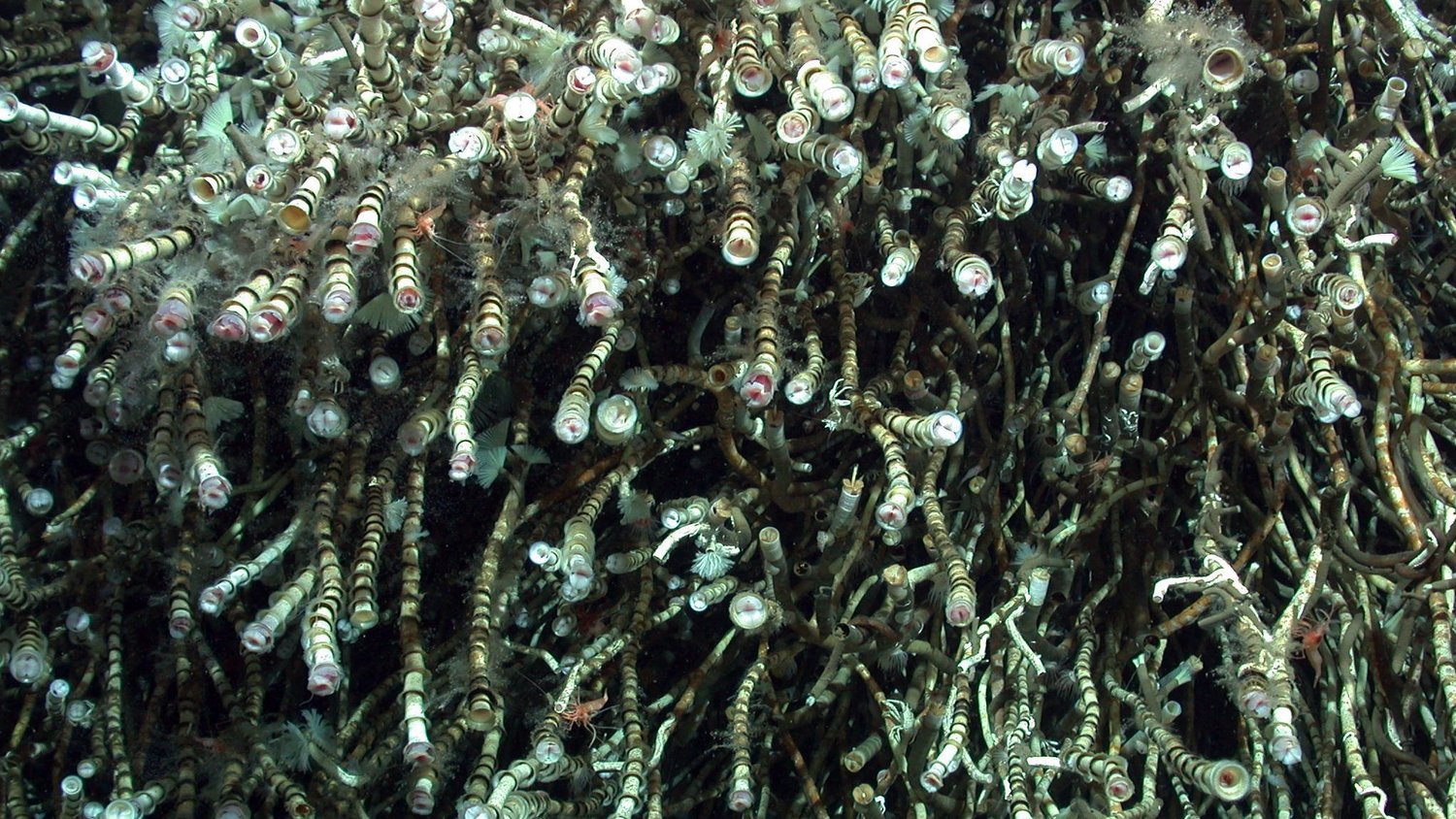
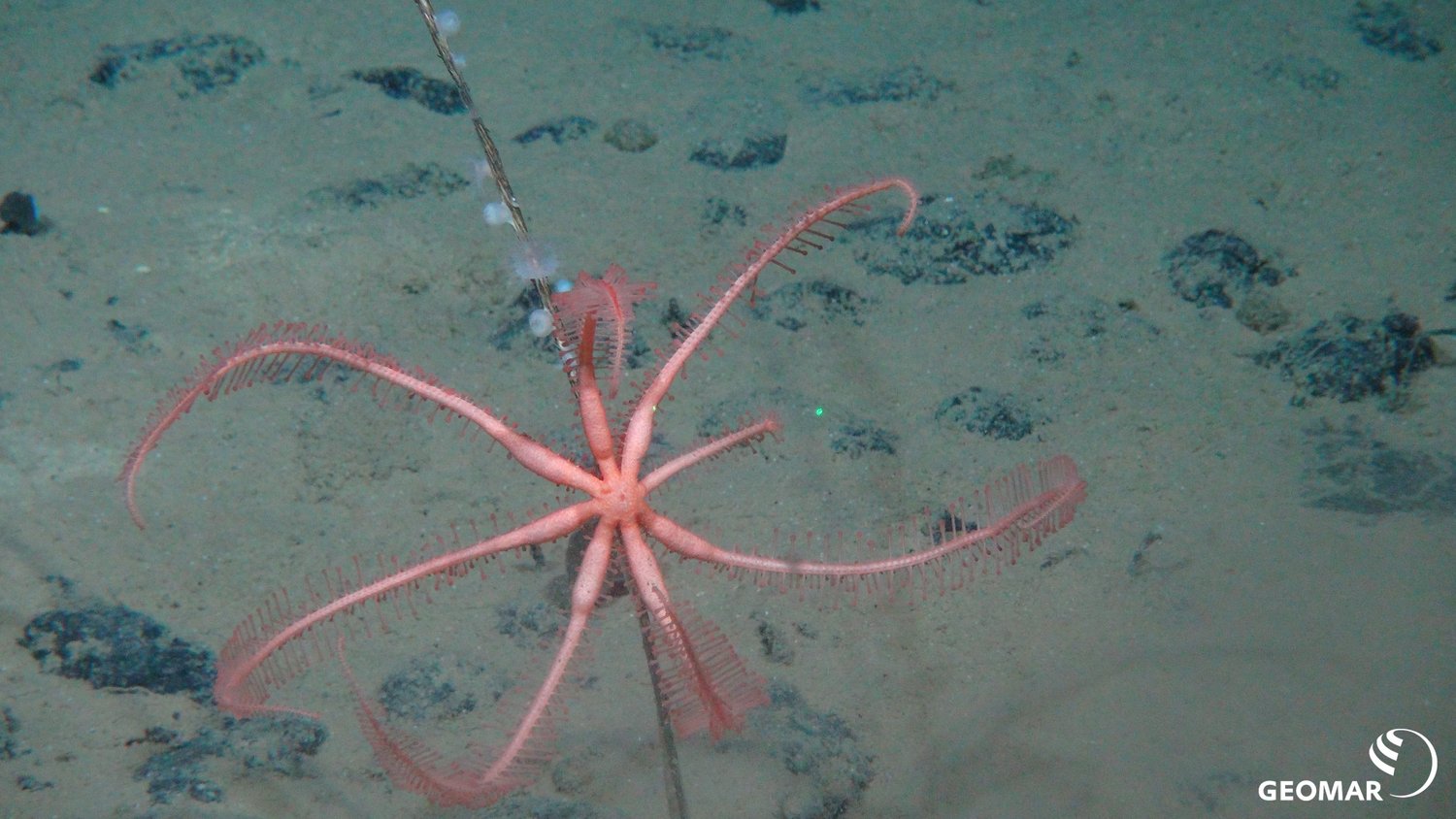
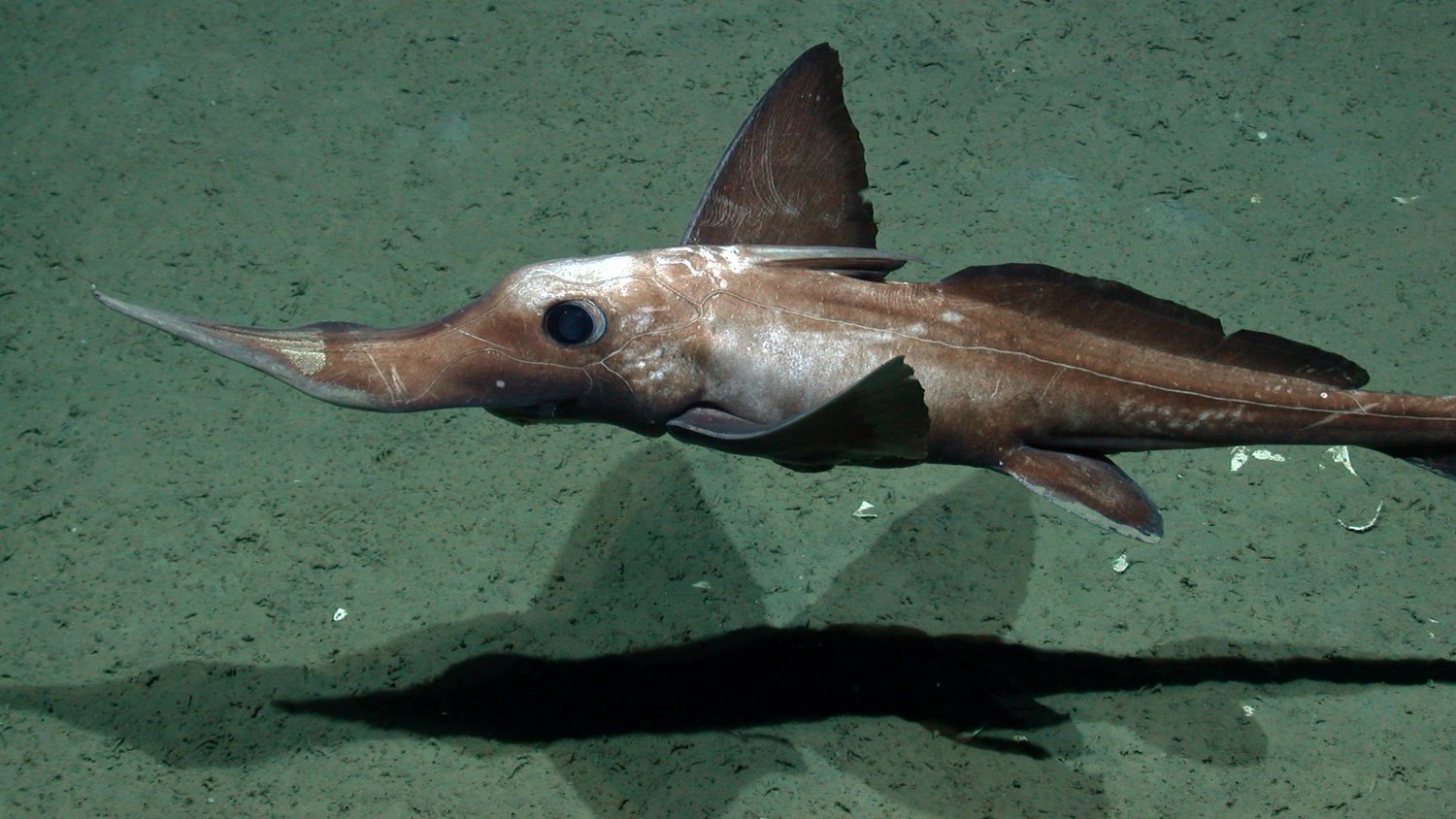
![[Translate to English:] Seeigel A purple sea urchin on the seabed stretches its long spines in all directions.](/fileadmin/_processed_/f/f/csm_2019-04-23_21-10-04_Sonne_SO268-2_154ROV23_OnlyLogo_klein_b07346b21f.jpg)
